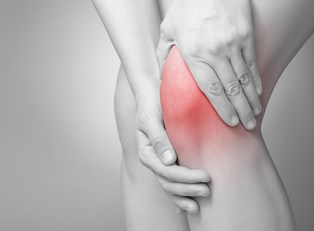The knee is a complex joint made up of three bones: the femur, tibia, and patella. The interaction of these bones, the areas between them, and the surrounding muscles provides much opportunity for pain and injury. Knee pain is common, accounting for a significant number of doctor visits in the United States.
Knee Pain Causes
Some injuries, including torn cartilage, ruptured ligaments, or medical conditions such as gout and arthritis all may lead to significant knee pain. The most common knee injuries fall under three categories: sprain (of a ligament), tear (of meniscus), and strain (of a muscle). Common conditions causing knee pain include bone chips, bursitis, iliotibial band syndrome, medial plica syndrome, Osgood-Schlatter disease, osteoarthritis, and tendonitis. Self-care measures often help and even resolve many types of minor knee pain.
Knee Pain Prevention
While some instances of knee pain cannot be prevented, there are still some techniques for reducing the likelihood of an injury. Exercises involving strength and stability of the knee, as well as low-impact exercises like swimming can help strengthen the joint and minimize your risk. Additionally, weight loss can reduce the stress you place on your joints if you are overweight or obese.
Knee Pain Symptoms
Knee pain is a symptom of overuse, injury, or a more serious condition. Additional symptoms and the severity of pain, vary depending on the specific cause. Anyone who suffers chronic pain, often while bending or straightening the knee, swelling, an inability to bear weight on the knee, popping or crunching during movement, "locking", or have a fever in addition to the redness and swelling should consult a physician for a thorough exam that may include X-rays and MRIs (Magnetic Resonance Imaging).
It is possible for injury or degeneration to cause a piece of bone or cartilage to break off and float in the joint space. These are called "loose bodies" and may not create problems unless they interfere with the knee joint movement. This is different from a dislocated kneecap, which occurs when the triangular bone (patella) which covers the knee's front slips out of place. Hip or foot pain may also cause, or be the effect of, knee pain as any shift in the normal walking motion can cause stress and aggravate joints over time.
Knee Pain Treatment
Not all knee pain is serious, but some injuries and conditions can lead to increasing pain, joint damage, and disability if untreated. An untreated knee injury increases the likelihood of developing similar injuries down the road. Over-the-counter pain relievers, such as acetaminophen (e.g. Tylenol), ibuprofen (e.g. Advil), and naproxen (e.g. Aleve), may help ease knee pain. Massaging the knees, in combination with the application of cremes containing lidocaine (a numbing agent), or capsaicin (e.g. Icy Hot) may also provide relief. Other home remedies include rest, icing for no longer than 20 minutes at a time, compression bandages, and elevation (propping the knee above the waist).
Medical knee pain treatments vary greatly, depending on the cause of the pain. A doctor may prescribe pain-relieving medications to treat deeper conditions like rheumatoid arthritis or gout. For injury and other conditions, physical therapy may be necessary to strengthen the muscles around the knee for greater stability and balance. Arch supports and different types of braces are recommended to help shift pressure away from whichever side of the knee is most affected by osteoarthritis. More invasive solutions may involve injections and surgery. Consider the pros and cons of both nonsurgical rehabilitation and surgical reconstruction before making a final decision regarding treatment.



